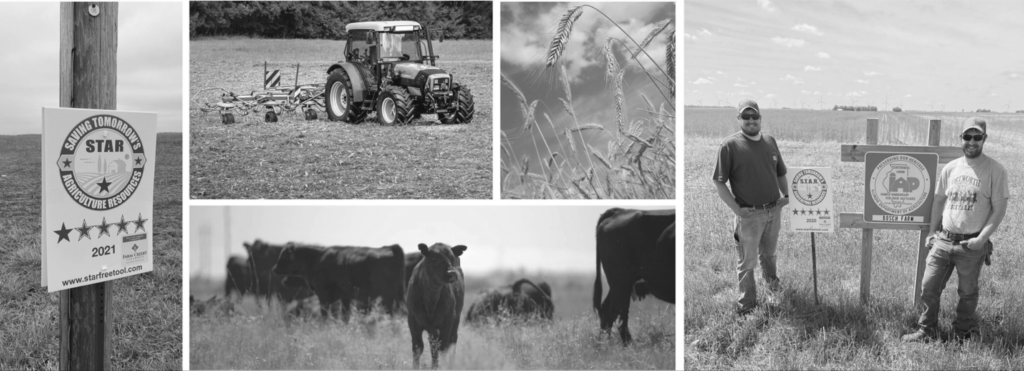Saving Tomorrow’s Agriculture Resources (STAR) is launching a national organization to guide, inspire, and standardize state and regional STAR Affiliate organizations as they address local resource concerns and empower local farmers and ranchers to make progress on their conservation journeys – wherever they currently are. The national organization will support STAR Affiliates, expand the STAR tool, and increase conservation practices across a variety of production systems on agricultural lands.
The STAR tool, developed by farmers for farmers, was created in 2017 with support from the Champaign County Soil and Water Conservation District in Illinois to inspire producers to contribute to the water quality goals outlined in the Illinois Nutrient Loss Reduction Strategy. The tool evaluates conservation practices implemented on individual fields by generating a 1 to 5 STAR rating based on locally identified natural resource concerns and is now part of a standardized framework that connects producers to technical support and incentives. STAR has since been adopted by state Affiliates across the Midwest and the West, including county soil and water conservation districts and State Departments of Agriculture.
STAR co-founder, Steve Stierwalt, provided his perspective on why STAR was created and described its impact, “Our journey started with the firmly held principle that ‘locally driven conservation is the best path to success.’ Local people making local decisions on how to best address locally identified natural resource concerns instead of a complicated, top-down approach. The development of STAR met this need as a simple, locally led, practice-based, scientifically supported tool and framework that makes sense to us farmers and ranchers. STAR creates an easy pathway to grow conservation practices to effectively and efficiently scale grassroots conservation efforts by incentivizing and rewarding the adoption of practices that have relevance to producers and their supply chain partners.”
The national expansion is made possible by a recent $3 million Climate Smart Commodities grant from the US Department of Agriculture, which was awarded to the Colorado Department of Agriculture (CDA) in July to expand STAR in the western region – including creating STAR Affiliates in Idaho, Montana, New Mexico, Utah, Washington, and Wyoming. Through this funding, STAR will leverage this momentum in the central U.S. to further support Affiliate development in Missouri, Iowa, Indiana, and other Midwestern states, ensuring consistency across all Affiliates and bringing broad-scale incentive opportunities to producers in all regions.
Cindy Lair, Deputy Director for Conservation Services Division and Climate Resilience Specialist at CDA, said “The STAR commitment to soil health and voluntary, incentive-based stewardship practices has been a key priority for the State of Colorado. STAR is an ideal solution for meeting our soil health goals because it is shaped from the ground up by farmers, ranchers, conservation districts, and other partners who helped CDA tailor it to work for different crops, range, and ways of farming and ranching across the state.”
The national STAR launch comes as leaders from producer groups, state and federal agencies, conservation organizations, academia, industry partners, foundations and NGO’s meet for a regional soil health event in Denver, CO.
STAR Executive Director Caroline Wade noted, “Working in partnership with STAR Affiliates and their producers, state agencies, conservation districts, universities, non-profits and other conservation focused entities, STAR has the potential to cost-effectively target a majority of production acres in the US. The standardized STAR framework provides producers a simple and straightforward entry into conservation practice adoption, which can then bridge the gap between producers’ perceptions of sustainability and the many outcomes-based market programs and supply chain initiatives.”
Read more at www.starconservation.org.
